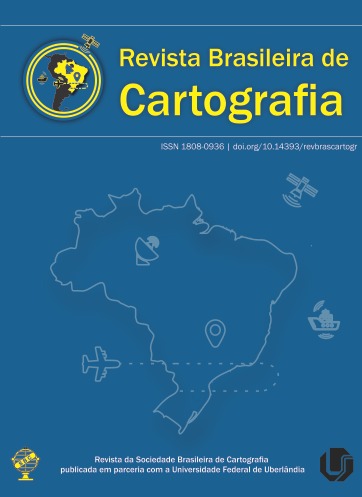Temporal Analysis of Heat Islands Through Surface Temperature and Vegetation Index in Recife-PE, Brazil
Main Article Content
Abstract
Among the anthropic factors that act in the high vulnerability of heat islands formation are the relationship with population density and changes in land use. In this case study, it is highlighted that the city of Recife has a high-density population and considered the fourth Brazilian capital with the largest in the country. The general objective of this research is to analyze the variations in the vegetation index and the surface temperature to identify their influence on the formation of heat islands. Temporal multispectral images (Landsat 5-TM and Landsat 8-OLI) covering the years 1989 to 2019 are used as materials. The main results found are: (i) the year of 2019 with higher temperatures, reaching regions with 37°C; (ii) in 1989 the highest values were 32°C; (iii) in terms of area, the city of Recife experienced a 34% increase of temperatures above 33°C and obtained a decrease of 44% considering milder temperatures; (iv) the vegetation cover values underwent significant changes, such as the 15% growth in the exposed soil index, and the 18% reduction in the average vegetation index; (v) Spearman's correlations indicate that there is a strong inversely proportional relationship between the two parameters evaluated (temperature and vegetation index), with values of -0.72 for 1989 and -0.59 for 2019. Finally, it was possible to detect the formation of heat islands, as well as freshness islands, observing an increasement of surface temperature especially where the urbanization process has intensified over time.
Downloads
Metrics
Article Details
Authors who publish in this journal agree to the following terms:
- Authors retain copyright and grant the journal right of first publication with the work simultaneously licensed under a Creative Commons Attribution License that allows others to share the work with an acknowledgment of the work's authorship and initial publication in this journal.
- Authors can enter into separate, additional contractual arrangements for the non-exclusive distribution of the journal's published version of the work (e.g., post it to an institutional repository or publish it in a book), with an acknowledgment of its initial publication in this journal.
- Authors are permitted and encouraged to post their work online (e.g., in institutional repositories or on their website) before and during the submission process, as it can lead to productive exchanges, as well as earlier and greater citation of published work (see "The Effect of Open Access").





